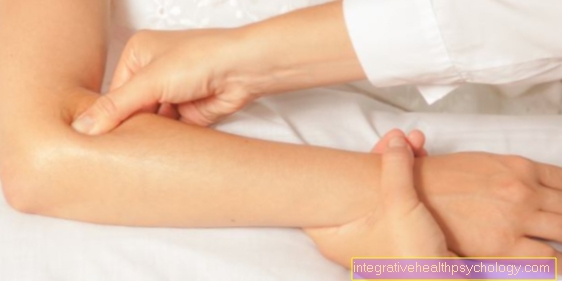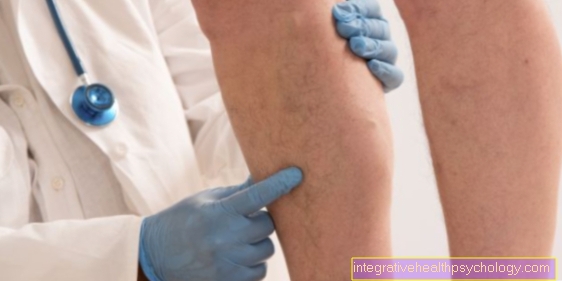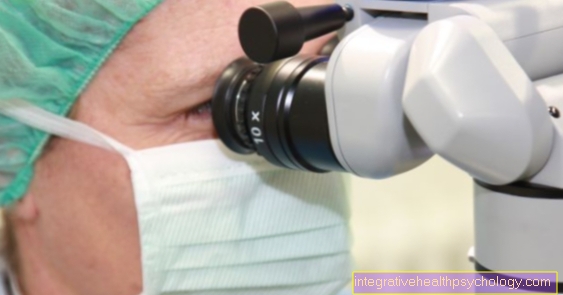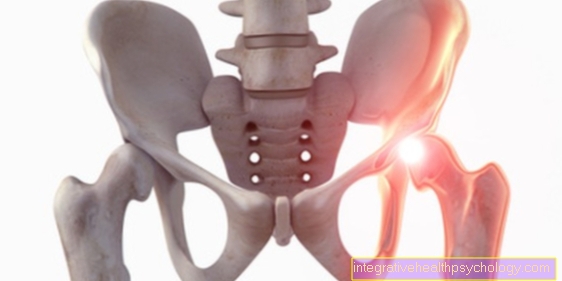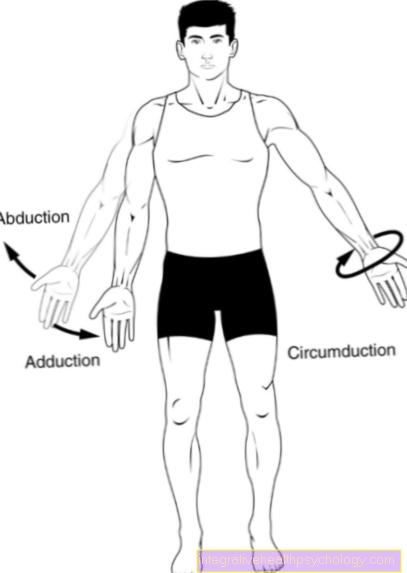Umbilical cord around the neck
definition
An umbilical cord loop, as the umbilical cord around the neck is called in technical jargon, means that the umbilical cord has wrapped itself once or several times around a part of the child's body, for example the neck. This happens with every third to fifth birth and does not automatically mean a danger for the unborn child. Only if the umbilical cord is under too much tension or is being squeezed is a hazard. A very long umbilical cord and too much amniotic fluid favor the umbilical cord wrapping because the unborn child has more freedom of movement.

causes
The umbilical cord is a system well protected by jelly-like tissue that supplies the unborn child with oxygen and nutrients. However, the umbilical cord is also a kind of toy for the unborn child, and particularly active children turn around in their tummy and play with the umbilical cord. During these twists, the umbilical cord can wrap around parts of the child's body. The longer the umbilical cord, the more likely it will be wrapped around. A normal umbilical cord is approximately two feet long at birth.
Excessive amniotic fluid, the so-called polyhydramnios, also leads to increased wraps, as the child has more freedom of movement. In particular, turning from the breech position to the head-down position in late pregnancy is often accompanied by a wrap. In some cases, however, such a rotation also causes a loop to be stripped off. In the case of a known wrapping, closer circulatory monitoring of the child may be necessary during the birth phase.
How often does the umbilical cord wrap around the neck?
Cord wrapping is significantly more common than many people believe, as only the complications are reported. Every third to fifth child is wrapped around the umbilical cord at birth, but only a fraction of these children experience circulatory-related events and even less permanent damage. During pregnancy, the umbilical cord can always rearrange itself and usually does not lead to complications. Only in rare cases is there a tight wrap early in pregnancy, which then often means the death of the fetus.
How can you prevent the umbilical cord from wrapping around your neck?
Umbilical cord wrapping cannot be prevented, but it also does not automatically pose a danger. Certain movement exercises or sleeping positions do not change the probability of being wrapped around. A danger to the child during the birth can be prevented by checking the child's circulatory situation more frequently. If there are abnormalities in the CTG, a caesarean section may be necessary and thus reduce the risk of complications. If a sibling has died during childbirth, a primary caesarean section without CTG abnormalities can be recommended.
What can be the late effects of an umbilical cord wrapped around the neck?
Circulatory-relevant wrapping can lead to circulatory disorders and an insufficient supply of oxygen. This can affect the whole body of the child, this happens when the umbilical cord itself is pulled, and only the brain of the child when the neck is wrapped tightly. An insufficient supply of oxygen leads to the death of cells in all organs. The brain is particularly vulnerable to a lack of oxygen.
An insufficient supply of oxygen to the brain can lead to permanent mental and physical disabilities in the child. The child's development can be slowed down and restricted. These consequential damages cannot be foreseen immediately after the birth and only show up as the child gets older. If the damage is severe, drinking problems can occur immediately after birth and the children can appear apathetic. Artificial ventilation and oxygen administration after the birth may also be necessary. With long-term oxygen therapy, the toxic effects of oxygen can cause blindness. The long-term consequences can range from a slight learning disability to severe multiple disabilities.
diagnosis
In late pregnancy and shortly before birth, an umbilical cord can be seen on ultrasound. In the case of a previous stillbirth, parents-to-be is recommended to have a Doppler ultrasound examination to assess the child's blood supply. Circulatory-relevant wraps can also be seen in the CTG, especially during birth.
If the loop is already known, a CTG is written at shorter intervals and the unborn child's circulation is monitored. In many children, the wrap is only visible during birth and does not cause any CTG abnormalities.
An umbilical cord wrapping around the neck can be recognized by these accompanying symptoms
In most cases, an umbilical cord can only be seen through CTG abnormalities or an ultrasound. Other symptoms are very rare. However, if the expectant mother feels that the otherwise active child is no longer moving, a doctor should be consulted. Even an imprecise feeling that something is wrong justifies a visit to the gynecologist.
A larger than average baby bump can also indicate an excess of amniotic fluid and increase the likelihood of being entangled. Furthermore, a lack of rotation and thus a breech position can indicate a looping, since with a short umbilical cord looping around the child, the freedom of movement for a rotation is insufficient.
therapy
In most cases, umbilical cord wrapping does not require treatment. A light wrap has no negative consequences for the unborn child during pregnancy. Complications can only arise during childbirth. If there are abnormalities in the CTG during childbirth, an emergency caesarean section can be performed to protect the child. If the umbilical cord is known to be too short with a loop and previous stillbirths, a primary caesarean section can be recommended. In the case of rare complications at an earlier stage of pregnancy, a caesarean section may also be necessary, which is then associated with the complications of premature birth. If complications have occurred, intensive care care for the newborn may be necessary. These include monitoring of vital functions, oxygen therapy and stabilization of the circulatory system. Artificial nutrition may also be necessary in the case of severe drinking weakness. In the case of late-stage damage, early intervention is helpful.

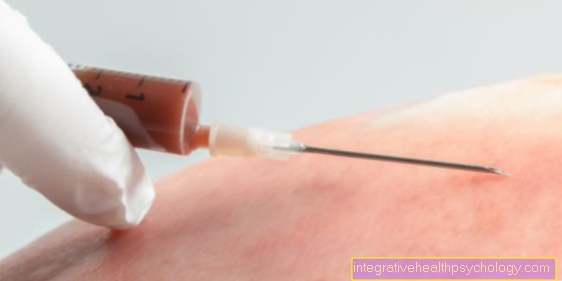




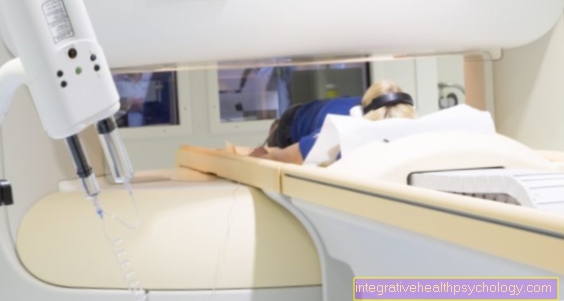





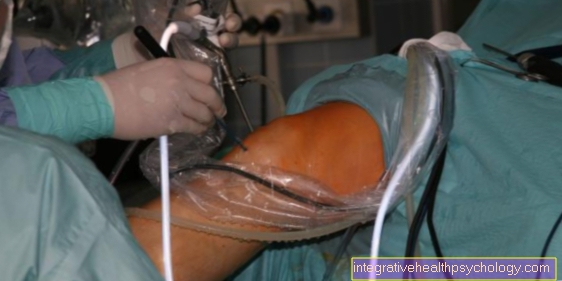




.jpg)



